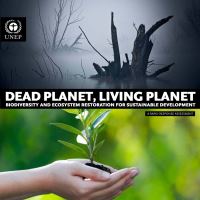

105
services in Menglun, Xishuangbanna, Southwest China. Environmental
monitoring and assessment 146: 147-156.
Hu, H. B.
et al
. 2008. Impact of land use and land cover changes on
ecosystem services in Menglun, Xishuangbanna, Southwest China. Envi-
ronmenatl monitoring and assessment 146: 147-156.
Ibanez
et al
. 2007. Desertification due to overgrazing in a dynamic com-
mercial livestock-grass-soil system. Ecological modelling 205: 277-288.
ICIMOD 2009. Local Responses to Too Much and Too Little Water in the
Greater Himalayan Region. International Center for Integrated Mountain
Development, Kathmandu, Nepal.
ICRI. 2005. ICRI Resolution on Artificial Coral Reef Restoration and
Rehabilitation.
http://www.icriforum.org/sites/default/files/ICRI_resolu-tion_Restoration.pdf [Accessed May 2010]
IFPRI. 2007. The World Food Situation: New Driving Forces and Re-
quired Actions. IFPRI, Washington D.C. Available online at:
http://www.
ifpri.org/pubs/fpr/pr18.pdf [Accessed on the 20 January 2009].
Ingraham, M. W. and foster, S. G. 2008. The value of ecosystem services
provided by the US national Wildlife Refuge System in the contiguous US.
Ecological economics 4: 608-618.
Instituto Terra 2007. Restoration of the Atlantic Forest (Mata Atlântica).
Available at:
www.institutoterra.org/index.htmand
www.globalrestora-
tionnetwork.org [Accessed 10/05/10].
IPCC 2001. Climate Change 2001: Synthesis Report. Contribution of
Working Groups I, II, and III to the Third Assessment. Report of the Inter-
governmental Panel on Climate Change, IPCC, Geneva, Switzerland.
IPCC 2007. Climate Change 2007: Synthesis Report. Contribution of
Working Groups I, II, and III to the Fourth Assessment. Report of the In-
tergovernmental Panel on Climate Change, IPCC, Geneva, Switzerland.
ITTO. 2002. ITTO guidelines for the restoration, management and re-
habilitation of degraded and secondary tropical forests. ITTO Policy Devel-
opment Series No 13. International Tropical Timber Organization. http://
ideastransformlandscapes.org/media/uploads/File/ITTOGuidelines.pdf
IUCN. 2008. Red list of threatened species. IUCN, Gland, Switzerland.
Available online at:
http://www.iucnredlist.org/Jaffe, R.
et al
. 2010. Estimating the density of honeybee colonies across
their natural range to fill the gap in pollinator decline censuses. Conserva-
tion Biology 24: 583-593
James, A. N.
et al
. 2001. Can we afford to conserve biodiversity? BioSci-
ence 51: 43-52.
Jianchu, X.
et al
. 2007. The Melting Himalayas. Regional Challenges
and Local Impacts of Climate Change on Mountain Ecosystems and Liveli-
hoods. ICIMOD Technical Paper.
Johnsen, B.O. and A.J. Jensen 1986. Infestations of Atlantic salmon
(Salmo salar) by Gyrodactylus salaris, in Norwegian rivers. - J. Fish Biol.
29, 233-241.
Johnsen, B.O. and Jensen, A.J. 2003. Gyrodactylus salaris in Norwegian
waters. In: Atlantic Salmon: Biology, Conservation and Restoration, pp. 38–
44. Petrozavodsk: Russian Academy of Sciences, Karelian Research Center,
Institute of Biology.
Johnsen, M. D.,
et al
. 2010. Pest reduction services by birds in shade and
sun coffee in Jamaica. Animal Conservation: 13: 140-147
Kaimowitz, D. 2003. Forests and Rural Livelihoods in Sub Saharan Afri-
ca, pp.45-65. In Okansanen, T., B. Pajari and T. Toumasjjukka (eds.) Forests
in Poverty Reduction Strategies: Capturing the Potential, EFI Proceedings
No.47, 2003. Tuusla European Forest Institute.
Keller, A.A., Goldstein, R.A. 1998. Impact of carbon storage through
restoration of drylands on the global carbon cycle. Environmental Manage-
ment 22: 757-766.
Kenis
et al
. 2009. Ecological effects of invasive alien insects. Biological
Invasions 11 (1): 21-45.
King, S. L.
et al
. 2009. The ecology, restoration and management of
siutheastern floodplain ecosystems: A synthesis. Wetlands 29: 624-634
Klein, D. R. 1980. Conflicts between domestic reindeer and their wild
counterparts: A review of Euroasian and North American experience. Arc-
tic 33: 739-756
Ko, J. Y.
et al
. 2004. A comparative evaluation of money-based and en-
ergy-based cost-benefit analyes of tertiary municipal wastewater treatment
using forested wetlands versus sand filatration in Louisiana. Ecological eco-
nomics 49: 331-347
Kremen C. and R. Chaplin. 2007. Insects as providers of ecosystem ser-
vices: crop pollination and pest control. In Insect Conservation Biology:
proceedings of the Royal Entomological Society’s 23rd Symposium. (Stew-
art, A.J.A., New, T.R. and Lewis, O.T. (eds)) CABI Publishing, Wallingford,
349-382.
Laffoley, D., Grimsditch, G. (eds). 2009. The management of natural
coastal carbon sinks. IUCN, Gland, Switzerland. 53 pp.
Lal, R. 2004. Soil Carbon Sequestration Impacts on Global Climate
Change and Food Security. Science 304: 1623-1627.
Lal, R. 2008. Carbon Sequestration. Philosophical Transactions of the
Royal Society B 363: 815-830.
Lal, R. 2009a. Soil Carbon Sequestration through Desertification Con-
trol. In: Bigas, H., Gudbrandsson, G.I., Montanarella, L., Arnalds, A. (eds)
Soils, Society & Global Change: Celebrating the Centenary of Conserva-
tion and Restoration of Soil Vegetation in Iceland. 31 August - 4 September
2007, Selfoss, Iceland. Proceedings of the International Forum: 112-122.
Lal, R. 2009b. Soils and food sufficiency: A review. Agronomy and sus-
tainable development 1: 113-133.
Le Maitre
et al
. 2004. Alien plant invasions in South Africa: driving
forces and the human dimension. South African Journal of Science 100
(1), 103–112.

















